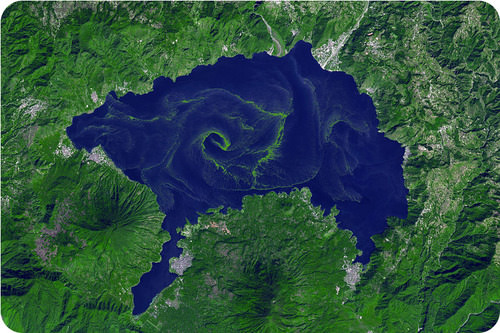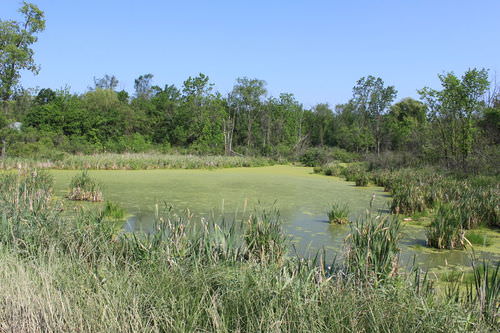6.14 相光合成
章节大纲
-
Look at the amazing meat-eating plants pictured here! Called pitcher plants, they use their “pitchers” to capture and digest insects. But even these pitcher plants—like all other plants—make food by . They “eat” insects just to get extra nutrients.
::看看这里描绘的令人惊叹的肉类食用植物!它们被称为投手植物,它们用它们的“食肉动物”捕捉和消化昆虫。 但即使是这些投手植物 — — 和所有其他植物一样 — — 也用它们来制造食物。 它们“吃”昆虫只是为了获取额外的营养物。Food From Light
::发光食品Most of the used by living things comes either directly or indirectly from the sun. That’s because sunlight provides the energy for photosynthesis. This is the process in which plants and certain other organisms synthesize glucose (C 6 H 12 O 6 ). The process uses carbon dioxide and water and also produces oxygen. The overall chemical equation for photosynthesis is:
::活物的大部分使用直接或间接地来自太阳。这是因为阳光为光合作用提供了能量。这就是植物和某些其他生物合成葡萄糖(C6H12O6)的过程。这一过程使用二氧化碳和水,并产生氧气。光合作用的总体化学方程式是:6CO 2 + 6H 2 O + Light Energy → C 6 H 12 O 6 + 6O 2
::6CO2 + 6H2O + 轻型能源 + C6H12O6 + 6O2Photosynthesis changes light energy to chemical energy . The chemical energy is stored in the bonds of glucose molecules. Glucose, in turn, is used for energy by the cells of almost all living things. Photosynthetic organisms such as plants make their own glucose. Other organisms get glucose by consuming plants (or organisms that consume plants).
::光合作用将光能改变为化学能量。化学能量储存在葡萄糖分子的结合体中。而葡萄糖则被几乎所有生物的细胞用作能量。光合作用生物体,如植物本身制造葡萄糖。其他生物则通过食用植物(或食用植物的生物体)获得葡萄糖。Q: How do living things get energy from glucose?
::问题:生活如何从葡萄糖获得能量?A: They break bonds in glucose and release the stored energy in the process of .
::A:它们打破葡萄糖的债券,释放储存的能源。Photosynthetic Organisms
::光合成生物体The organisms pictured in the Figures , , and all use sunlight to make glucose in the process of photosynthesis. In addition to plants, they include bacteria and algae. All of these organisms contain the green pigment chlorophyll, which is needed to capture light energy.
::在光合作用过程中,所有生物都利用阳光制造葡萄糖。除了植物外,它们还包括细菌和藻类。所有这些生物都含有绿色色素叶绿素,这是捕捉光能所需要的。A tremendous amount of photosynthesis takes place in the plants of this lush tropical rainforest. The green streaks on this very blue lake are photosynthetic bacteria called cyanobacteria. The green “scum” on this pond consists of photosynthetic algae. Summary
::摘要-
Photosynthesis is the process in which certain living things use energy in sunlight to synthesize glucose from carbon dioxide and water. Oxygen is also produced in this process.
::光合作用是某些生物在阳光下利用能量合成二氧化碳和水中的葡萄糖的过程,在这一过程中还生产了氧气。 -
Chemical energy that is stored in the bonds of glucose molecules is used by the cells of almost all living things for energy.
::储存在葡萄糖分子联结中的化学能量 被几乎所有生物细胞 用来制造能量 -
Living things that undergo photosynthesis and produce glucose include plants, cyanobacteria, and algae.
::进行光合作用和生产葡萄糖的活物包括植物、蓝细菌和藻类。
Review
::回顾-
What is photosynthesis?
::什么是光合作用? -
How is energy transformed in photosynthesis?
::光合作用如何改变能量? -
Why are photosynthetic organisms green?
::为什么光合生物是绿色的?
Explore More
::探索更多Watch the video about photosynthesis, and then answer the questions below.
::观看光合作用视频, 然后回答下面的问题。-
What structures in the leaves of plants are the keys to photosynthesis? Why are these structures green?
::植物叶中哪些结构是光合作用的关键?为什么这些结构是绿色的? -
In the video, how was the role of chlorophyll in photosynthesis demonstrated?
::在影片中,叶绿素在光合作用中的作用是如何表现的? -
Identify and briefly describe the two sets of reactions that take place during photosynthesis.
::确定并简要说明在光合作用期间发生的两组反应。
Resources
::资源 -
Photosynthesis is the process in which certain living things use energy in sunlight to synthesize glucose from carbon dioxide and water. Oxygen is also produced in this process.



